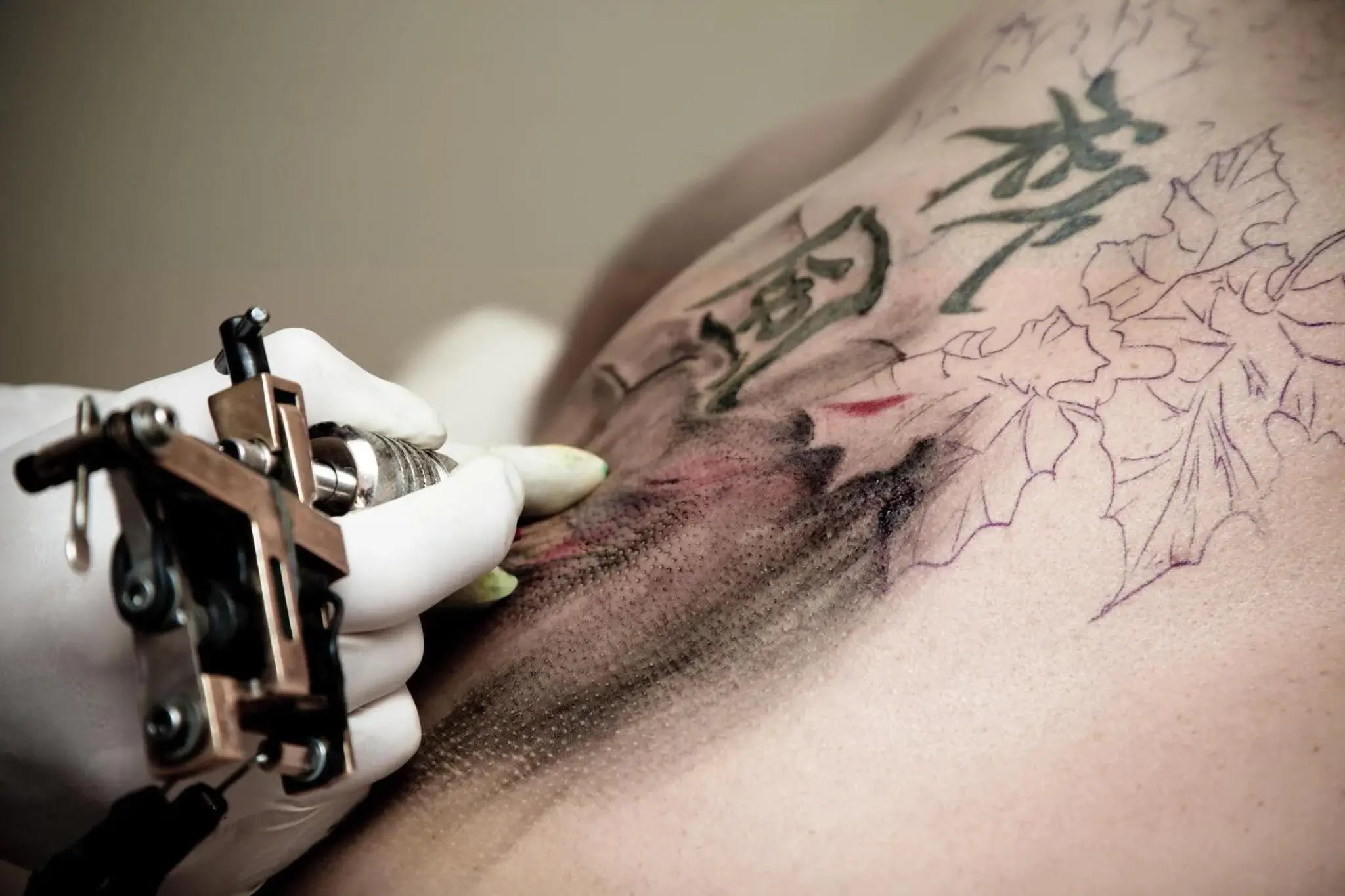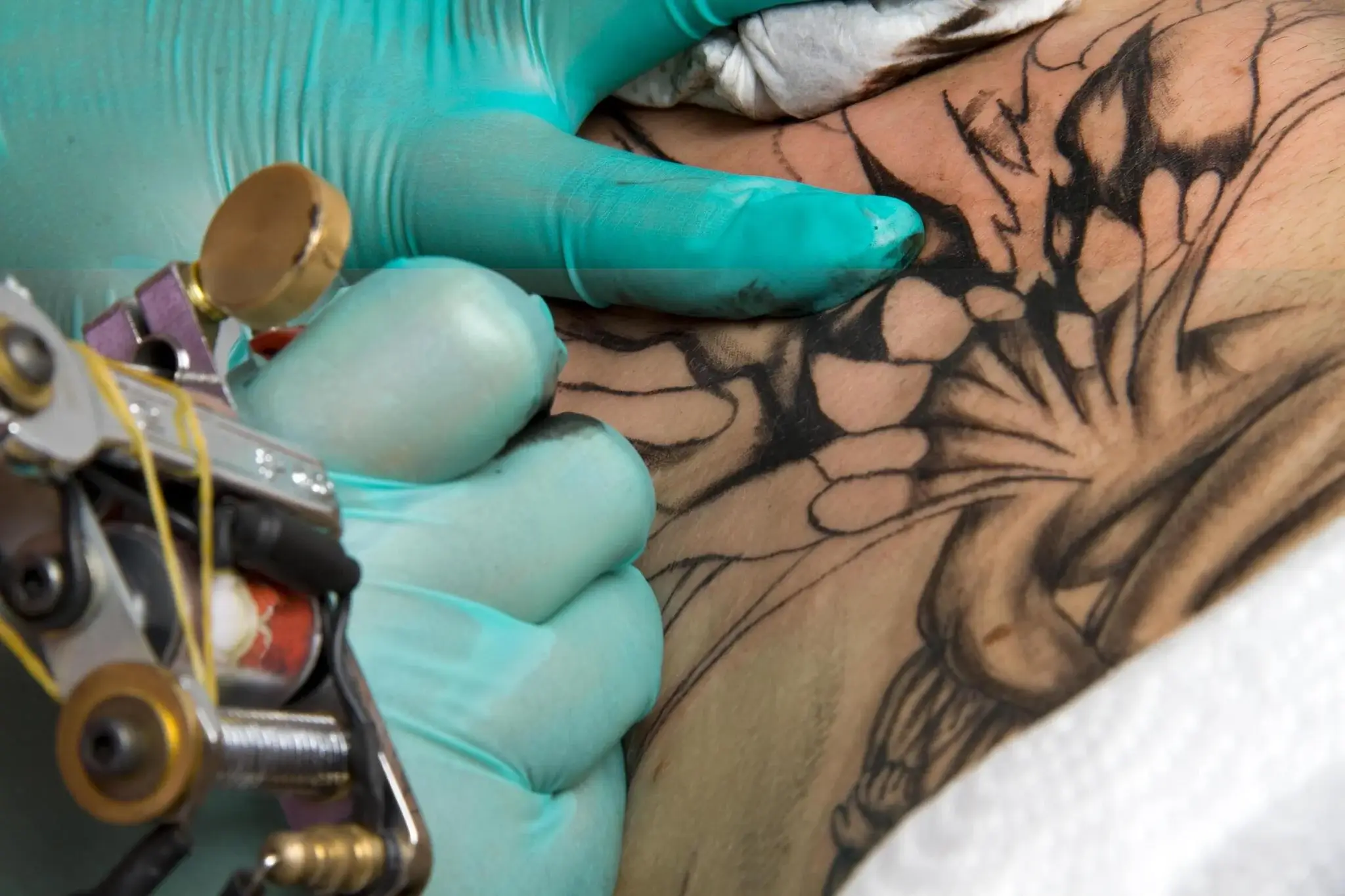You know what is the best way to express your feelings stunningly? It is tattoos but it is painful and sometimes comes with some side effects like keloid scarring. The scarring around the keloids occurs after an injury, such as a tattoo, causes the skin to heal abnormally. They are raised, thick, and irregular. It is a painful, itchy and ugly experience and also impacts your tattoo’s quality and appearance. Now is a great time to understand How to Prevent and Treat Keloid Scarring Tattoos, which is important for anyone considering body art. I will explain what is the reason for keloid scarring, how to stop it, and how you will recover it if it happens to you.
What are keloid scars?
There are various types of keloid scars, which are characterized by abnormal growth of scar tissue that extends beyond the boundaries of the original wound or injury. But for you, it is possible to find them in a variety of sizes, colours, and textures, and they are often smooth and shiny. I also discussed the reason for Keloid Scarring, why it’s happening and how you can stop it.
How Does Keloid Scarring Occur?
You know that in this advanced and informative world, there is still no complete understanding of keloid scarring, but it is believed that genetics, skin type, and immune system responses are all related to it. It is very normal for some people to develop keloids more than others, especially when their skin tone is darker or if there is a family history of the condition. There are also specific body parts where keloids are more likely to occur than others, including the chest, back, shoulders, ears, and neck.
When your healing process starts, the skin heals a wound too quickly. Keloids form, which is the main reason for the overproduction of collagen, a protein that helps you heal the skin. Collagen builds up instead of forming a smooth and flat scar, resulting in a raised and irregular scar that grows beyond the original wound. Many types of skin injuries can cause this, including tattoos, piercings, burns, cuts, acne, and surgery.
Important Steps That You Can Take
- An injury to the skin, such as a tattoo, can cause Keloids. Keloids are raised, thick, and irregular scars caused by abnormal healing.
- Tattoo keloids can make your tattoo look and feel unattractive, cause itching, pain, and discomfort, and affect your self-esteem.
- Keloids tend to appear more frequently in people with darker skin tones, in those with keloids in the family, or in those who have previously suffered from keloids.
- Pick a trusted and experienced tattoo artist and a reputed shop to stop the keloids. You can save yourself from that part of the body that causes keloid formation, by taking good care of your tattoo and monitoring it for abnormal healing or signs of infection.
- In this Keloid treatment, different things can include corticosteroid injections, silicone gels or sheets, cryotherapy, laser therapy, or surgery. But in this treatment, there are side effects and risks connected with these treatments, and they may not be suitable for everyone.

How to Prevent Keloid Scarring?
I am here to tell you that the greatest way to stop keloid scarring is to avoid getting tattooed in the 1st place, particularly if you suffer from keloids or have a risk of making keloids. To reduce your chances of developing keloid scars, you can take these steps if you’re serious about getting tattooed:
1. Choose a Trusted Shop And Experience Artist
You can pick a trusted tattoo shop and an experienced artist. Before getting a tattoo you must ensure that the artist has appropriate hygiene and sterilization, and fulfills safety measurements. The artist also uses top-quality tattoo ink and equipment.
2. Choose Design Carefully
You can select the perfect design and location for your tattoo. I suggest you save yourself from areas that are more risky to keloid creations, including shoulders, neck, chest, ears and back. Don’t choose complex or big designs, as these may damage your skin more and take longer to heal.
3. Follow Proper Aftercare
Once you get your tattoo completely, you will follow the proper aftercare guidelines strictly. Keep your tattoos shiny and stunningly moisturized and clean. You will also save it from sun exposure, itching, picking, and gym sessions, and don’t pull too much weight. If you need to wash and apply ointment more frequently, or when to change dressing, look to your tattoo artist for advice on how long to keep the bandage on.
4. Monitor Your Tattoo
Also, concentrate on your tattoo and monitor for any infection signs or abnormal healing. During the healing process, if you feel any swelling, redness, pain, fever or pus, discuss with your tattoo artist instantly. A keloid is a type of scar that is raised, thick, or irregular, and you should pursue medical attention as soon as possible if you notice any of these traits.
Treating Keloid Scarring from Tattoos
Medical Treatment Options
Injections of corticosteroids, cryotherapy, laser therapy, and surgical removal are all medical treatments for keloid scars. As a result of these interventions, the tattooed area will appear better, the scar will flatten, and there will be less itching.
Natural Remedies and Home Treatments
If you do not choose the medical option, you can go with natural home-based remedies. Different kinds of natural remedies help you to enhance the appearance of keloid scars, such as onion extract, silicone gel sheets, and vitamin E oil. But I must suggest before applying any home or natural remedies you should discuss with professional healthcare when it comes to tattooed skin.
Long-Term Management and Prevention Strategies
Lifestyle Changes To Prevent Keloid Scarring
If you follow the proper healthy life guidelines then it improves your skin health and minimizes the risk of keloid scars. To improve your health I recommend you follow these instructions it’s my experience and collect professional artists: A healthy lifestyle including a balanced diet, regular exercise, and stress management is very important for your health.
Regular Follow-ups With Dermatologists
You will need to monitor your skin and discuss any concerns or new developments. Keloid scarring sufferers should schedule regular dermatological checks with their dermatologists. In this advanced technology world Interventions early in the treatment process can improve the outcome of the treatment and prevent complications.
Summary
It is my final word and conclusion of this article, that keloid scarring from tattoos can be an important concern for everyone who considers body art. When you read this article, then you can easily understand the reasons of keloid scars, and take important steps to stop scars before getting a tattoo on your body and following proper aftercare steps. The chances of developing keloid scars are minimized and you can enjoy your tattoos without worrying about them. You can follow tattoorecover for more tattoo updates.
Frequently Asked Questions
Can anyone get a keloid scar from a tattoo?
While anyone can create keloid scars, everyone with a genetic predisposition or darker skin tone is more sensitive, especially in areas prone to tension or trauma.
Are there topical creams preventing keloid scarring after getting a tattoo?
Topical creams do not appear to be effective in preventing keloid scarring, according to limited evidence. It is necessary to discuss with a dermatologist for professional recommendations.
How long does it take for a keloid scar to form after getting a tattoo?
The scars of Keloid can be created weeks to months after the start of trauma, including tattooing. However, not everyone who gets a tattoo will develop keloid scarring.
Can keloid scars be completely removed?
Yes, but it is very challenging to fully remove the keloid scars, and recurrence is possible. Different treatment goals enhance appearance and reduce symptoms, but complete eradication may not always be achievable.
Are there any alternative treatments for keloid scars?
There have been different replacement therapies studied for keloid scars, including acupuncture, herbal remedies, and pressure therapy. There is, however, little evidence that these treatments are effective, and more research is needed.

5 thoughts on “How to Prevent and Treat Keloid Scarring Tattoos in 2024”